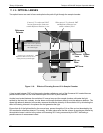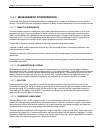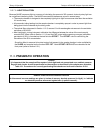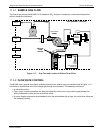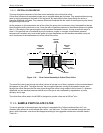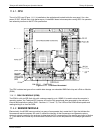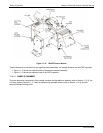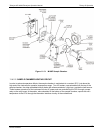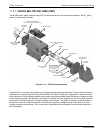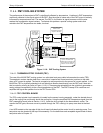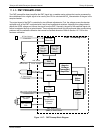
Theory Of Operation Teledyne API M100E Analyzer Operation Manual
234
The core of the analyzer is a microcomputer that controls various internal processes, interprets data, makes
calculations, and reports results using specialized firmware developed by Teledyne API. It communicates with
the user as well as receives data from and issues commands to a variety of peripheral devices through a
separate printed circuit assembly to which the CPU is mounted: the motherboard.
The motherboard is directly mounted to the rear panel and collects data, performs signal conditioning duties and
routes incoming and outgoing signals between the CPU and the analyzer’s other major components.
Concentration data of the M100E are generated by the Photo Multiplier Tube (PMT), which produces an analog
current signal corresponding to the brightness of the fluorescence reaction in the sample chamber. This current
signal is amplified to a DC voltage signal (front panel test parameter PMT) by a PMT preamplifier printed circuit
assembly (located on top of the sensor housing). PMT is converted to digital data by a bi-polar, analog-to-digital
converter, located on the motherboard.
In addition to the PMT signal, a variety of sensors report the physical and operational status of the analyzer’s
major components, again through the signal processing capabilities of the motherboard. These status reports are
used as data for the SO
2
concentration calculation (e.g. pressure and temperature reading used by the
temperature/pressure compensation feature) and as trigger events for certain warning messages and control
commands issued by the CPU. They are stored in the CPU’s memory and, in most cases, can be viewed
through the front panel display.
The CPU communicates with the user and the outside world in a variety of ways:
Through the analyzer’s keyboard and vacuum fluorescent display over a clocked, digital, serial I/O bus
using the I
2
C protocol;
RS-232 and RS-485 serial I/O channels;
Various analog voltage and current outputs and
Several digital I/O channels.
Finally, the CPU issues commands (also over the I
2
C bus) to a series of relays and switches located on a
separate printed circuit assembly, the relay board (located in the rear of the chassis on its own mounting bracket)
to control the function of key electromechanical devices such as heaters that keep the sample chamber at a
steady temperature and, when installed, the zero/span and internal zero/span valve sets and heaters.
04515F DCN6048



